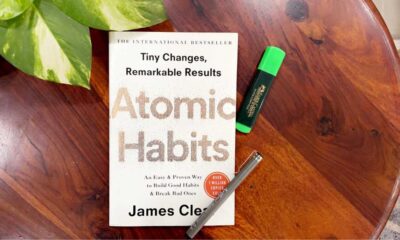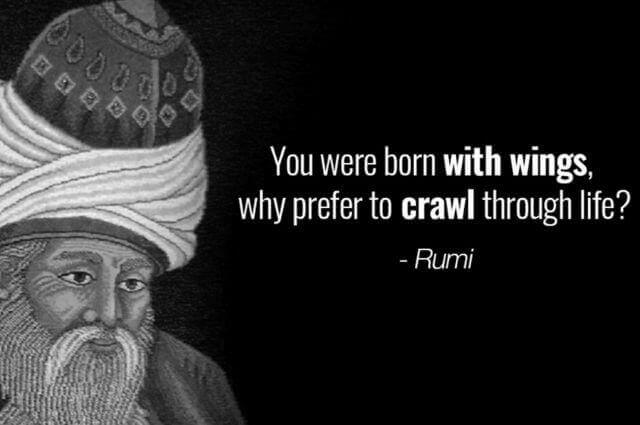Growth
7 Steps to Getting Things Done

Do you ever feel like you’re working nonstop but never quite getting where you want to be? It’s like throwing a dozen balls in the air and hoping they will never come crashing down.
Life presents us with many obligations, ambitions, and duties, and it’s simple to feel overburdened by the number of things we have to do. A sensible and proven strategy for getting things done without affecting your productivity.
In this article, we’ll start a transformational journey through the “7 Steps to Getting Things Done.” Consider this your road plan for thriving in a world where there are many demands on your time and attention, in addition to just surviving.
These steps are your secret weapon whether you’re a student aiming to be top in academic, a professional hoping to excel in the career, or just someone attempting to manage work, family, and personal goals.
Consider them as the tools in your toolbox, each one created to address a certain problem and help you live a more well-organized, effective, and satisfying life.
These actions focus on doing the right things at the right time, in the appropriate manner, rather than merely doing more of them.
Imagine a life where you are confidently and systematically moving towards your goals rather than feeling overwhelmed by a mountain of duties.
So let’s get started and learn how to make things happen, one step at a time, if you’re ready to reinvent your attitude to productivity and realise your full potential.
1. Set Precise Goals
Specify your goals.
Setting defined goals is the first step in getting things done. What do you want to achieve? Ask yourself. Your goals have to be SMART (specific, measurable, achievable, relevant & time-bound).
For instance, instead of establishing a general objective like “lose weight,” you may say something more specific like “lose 10 pounds in two months through regular exercise and a balanced diet.”
Prioritise your objectives.
Not all objectives are of the same importance. You should concentrate your efforts on what matters most by using prioritisation.
Organise your tasks using techniques like the Eisenhower Matrix, which divides them into four categories: urgent and important, not urgent but important, urgent but not important, and neither urgent nor important. This makes it easier for you to decide how to spend your time and energy.
SMART Goals: Why They Matter
A framework for reaching your goals is offered by SMART goals. Every component of a SMART objective serve their purpose:
- Specific: Clearly state the goals you have in mind.
- Measurable: Create standards to monitor your progress.
- Achievable: Make sure your objective is doable and practical.
- Relevant: Make sure your aim is in line with your objectives.
- Time-Bound: Setting a deadline will elicit a feeling of urgency.
Making SMART objectives can help you turn your dreams into something more tangible and doable.
2. Organise your Plans
Set up a to-do list.
A to-do list is a straightforward yet effective tool for task organisation. Everything you need to accomplish, big or small, should be written down. Divide more difficult activities into smaller, and manageable steps.
Use classic pen and paper or digital apps, depending on your preferences. Update your list frequently, and refer it daily.
Techniques for Time Management
For productivity, time management skills must be effective. Learn about time management strategies including time blocking, the Pomodoro Technique, and the two-minute rule.
The Pomodoro Technique encourages focused intervals of work followed by brief pauses. Try several variations of these techniques to see one suits you the best.
The Eisenhower’s Matrix
The Eisenhower Matrix, so named in honour of the president, is an effective method for setting priorities. It divides tasks into four groups, or quadrants:
- Urgent and Important: This work demands quick attention.
- Not Urgent but Important: Concentrate on these tasks for long-term success
- Urgent but Not Important: Wherever feasible, assign these tasks to others.
- Neither Urgent nor Important: These tasks can be cancelled or delayed since they are neither urgent nor important.
You may strategically organise your time and energy by utilising this matrix.
3. Limit Distractions
Determine the Most Common Distractions
Your progress might be halted by distractions. Determine the common distractions in your environment, such as social media, smartphone notifications, or noisy surroundings. The first step in successfully managing them is to recognise them.
Use focus strategies
Set particular work hours, disable non-essential alerts, designate a specific workplace, and use internet blockers as techniques to cut off distractions. With the use of these strategies, a distraction-free workspace can be created.
Mindfulness’s Role
Your capacity to maintain attention can be enhanced by practising mindfulness. Being totally present in the moment is a component of mindfulness, which can aid you in avoiding distractions.
You may improve your capacity for mindfulness by using practises like deep breathing and meditation.
4. Execute a move
Get Rid of Procrastination
A frequent obstacle to productivity is procrastination. Recognise the underlying causes of your procrastination, whether they be task aversion, lack of motivation, or fear. Use methods like the “two-minute rule,” deadlines, and positive affirmations to improve determination to overcome it.
Build momentum by starting small.
The toughest part is frequently getting started. Start modest and controllable to gain momentum. Take on more challenging jobs once you’re in the zone. Celebrate your success along the road since even modest victories may inspire you.
Utilising the Motivating Force
Having motivation can help you get things done. Whether it’s visualising your eventual result, looking for inspiration from others, or making prizes for yourself, figure out what inspires and drives you. To stay on track, keep your motivation level strong.
5. Be consistent
Make Habits
Long-term success depends on being consistent. Create habits out of useful behaviours. Whether it’s daily exercise, consistent reading, or effective task management, start with one habit at a time. These routines eventually become second nature.
Monitor Your Progress
Make sure you’re on the correct road by keeping an eye on your progress. Use notebooks, apps, or spreadsheets to keep track of your successes and failures. You may remain responsible for achieving your goals by periodically monitoring your progress.
Habit Formation: A Scientific Approach
You can create and sustain effective habits by having an understanding of the science behind habit development. A cue, a routine, and a reward are often involved in habit development.
You can consciously establish and reinforce beneficial habits by being aware of these components.
6. Learn and Adapt
Adopt Flexibility
Plans may alter since life may be unexpected. Be willing to change your tactics and objectives as needed. Being adaptable enables you to take advantage of unforeseen possibilities and problems.
Analyse both successes and failures
Take some time to consider your successes and failures. Examine the positive and negative aspects. It’s important to learn from both achievements and setbacks if you want to advance your productivity.
Growth Mindset
As suggested by psychologist Carol Dweck, adopting a growth mindset can improve your capacity for adaptation and learning.
A growth mindset is characterised by the conviction that you can gain knowledge and experience from your encounters. Accept obstacles as chances to grow and flourish.
7. Look for Assistance
Team up and assign tasks
You do not need to struggle alone. When feasible, work on projects alongside co-workers, friends, or family members. Delegate tasks that others can complete successfully so that you may concentrate on your main duties.
Accountability Associates
A game-changer is having an accountability partner. Someone you can trust should be informed of your goals and your progress on a frequent basis. You can stay motivated and hold yourself accountable with their guidance and encouragement.
Social Support’s Influence
Your ability to achieve your goals depends heavily on your social support. Join organisations or participate in supporting communities that are relevant to your goals.
Your willpower may be strengthened by exchanging experiences with others and getting support from others who share your interests.
Takeaway
Being more productive means getting things done in less time. It’s important to learn the art of time and energy management if you want to accomplish your goals. Set clear, attainable daily goals, then divide them into more manageable tasks.
Consider giving simple tasks to those who could excel at them so you can concentrate on more important tasks. Once you’ve developed a strategy for accomplishing your goals, make sure it is consistently carried out and remains relevant.
You’ll experience the power of completing more while keeping a laser-like focus on your goals as you explore further into the realm of productivity.
This methodical technique won’t simply increase your productivity; it will also result in a better quality of life and career development.
Are you ready to increase your productivity and precisely accomplish your objectives? It’s time to go forward!
Start applying these techniques into practice right away to see how your life will change as a result.
Start moving in the direction of a more productive you. Start right away!
-

 Lifestyle3 months ago
Lifestyle3 months ago7 Daily Habits to Elevate Your Dental Care Routine
-

 Lifestyle3 months ago
Lifestyle3 months agoBenefits Of Amla Juice For Weight Loss
-

 Growth2 months ago
Growth2 months agoThe Hero’s Journey: Transformative Questions for Success?
-

 Books2 months ago
Books2 months ago10 Life-Changing Lessons from ‘Atomic Habits’ by James Clear
-

 Mental Health3 months ago
Mental Health3 months agoBenefits of Undergoing Genetic Testing for Mental Health
-

 Relationship3 months ago
Relationship3 months agoMemorial Tree for a Beloved: Celebrate the Legacy of a Life
-

 Growth2 months ago
Growth2 months agoHow Cognitive Biases Affect Our Decision-Making Process
-

 Travel3 months ago
Travel3 months agoMindset Peaks: The Mental Benefits of Trekking Explained
































